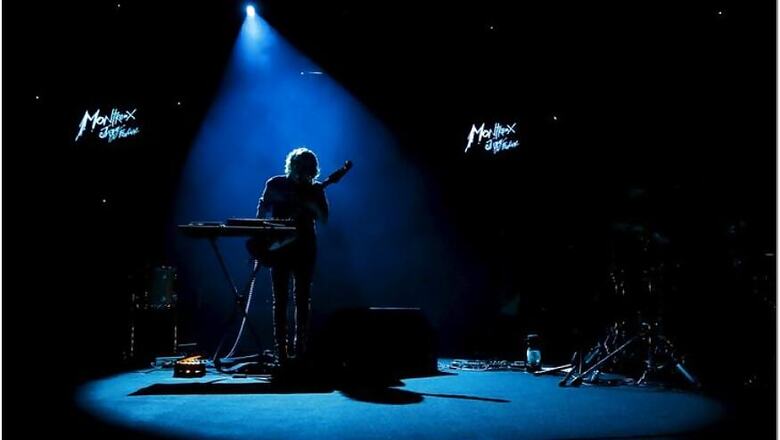
views
As an ardent gig-goer and follower of many music forms in the country, it’s been most interesting to trace the growth of specific styles and genres in India, especially when you compare them to their story of origin in the West.
Hip hop, for one, grew out of the rough neighbourhoods and racial tensions in the US to become the sound of celebration as well as condemnation. In India, rap and hip hop’s spotlight moment arrived largely due to kitschy styles of Baba Sehgal and Devang Patel, then being usurped by the hedonism of Punjabi artists like Yo Yo Honey Singh and Badshah. Only as recently as five years ago, desi rap gave space and major acceptance to socially conscious artists talking about real struggles and not Rolls Royce.
Much before hip hop’s entrance to the world and specifically India, jazz also grew from African and black roots to become the belle of the ballrooms and clubs, which it still remains for more than a century now. As early as 1935 – as documented by Naresh Fernandes in Taj Mahal Foxtrot – there was jazz and swing in India. Even as Mumbai became a hub for jazz clubs and bands, bringing down artists from around the world, the country had its own stars in the likes of saxophonist Braz Gonsalves, singer Pam Crain and much later, Louiz Banks.
It’s important to go back to hip hop as a recent and relevant example because only last month, one of its most feted stars – Divine aka Vivian Fernandes – hosted his own day-long festival called Gully Fest at Mumbai’s Famous Studios. Of course he had sponsors and a team at his side, but he clearly intended it to be a free event because he knew the kind of kids who follow him who have been denied entry at his club shows, by virtue of being underage or just unable to pay the entry fees.
And when was the last time you saw a jazz festival – if not a club show – that offered free entry? Whether it’s music schools, venues or festivals, jazz probably has never been marketed to the masses, even though this was exactly where it originated from. Despite it’s far-reaching popularity and timelessness, there’s a major accessibility problem for jazz in India. With the exception of the International Jazz Day in New Delhi – organized by the Indian Council for Cultural Relations (ICCR) – jazz gatherings are often just for those with enough in their wallets.
For a country that’s had a history of well-received and well-promoted jazz, there seems to be a struggle in keeping it open to public consumption. Venues across the country – the Piano Man Jazz Club in New Delhi (which recently celebrated three years), The Quarter and the National Centre for Performing Arts in Mumbai and Windmills Craftworks in Bengaluru are more or less upscale establishments.
If public accessibility is one issue, the other is how it shapes interest in the next generation. While schools such as the True School of Music in Mumbai and others around the country instill the importance of jazz, it comes at a premium cost, like most music education in the country. One notable exception and perhaps a way forward could be what international schools are doing to interest potential students in India.
What has changed about the way Indians pick up jazz today is that they prefer formal schooling over sitting down a teacher at home. While most Indians – who can afford it – will gladly head out to the Berklee College of Music in Boston or Musicians Institute in Los Angeles, there’s only things like the Berklee India Exchange who provide full scholarships and the sort to make sure it’s not just the affluent who are heading overseas for their music education.
Once they’re overseas, however, there’s certainly an allure in the music world of the US compared to slogging it out for attention in India. We’ve seen several promising artists such as Bangalore’s Chandbibi and the Waste Candidates release an exceptionally solid jazz/funk album only to disband shortly, as members separated for studies. This is not a problem necessarily occurring only in jazz, but if you as a musician would have to choose between Los Angeles and New Orleans over New Delhi and Bangalore, who’s to fault you?
Where veterans like Louiz Banks have thrived for decades and the likes of jazz fusion guitar legend John McLaughlin has toured India several times over ever since forming the Mahavishnu Orchestra in the 1970s, right now jazz is yet to find new homegrown heroes. On the surface of it, acknowledgment is due for artists sprouting up in Ahmedabad, Guwahati and more parts of the country outside of the major metros, but sustenance is key.
While November includes the long-awaited India debut of piano legend Chick Corea, December will also shine a light on the jazz-influenced talent of Australian “neo soul” band Hiatus Kaiyote, who are headlining the Goa International Jazz Live festival between December 8 and 9 and an additional headline set at Bacardi NH7 Weekender in Pune the same week.
Indian promoters still prefer to rely on international artists to bring crowd into club shows, but there is rarely any space for local jazz artists to stand at the same level as these ‘headliners’. As far as the calendar year goes, it all picks up during International Jazz Day – April 30 – across venues that host local talent, but it often feels like a seasonal interest.
As has always been noted about jazz – it’s different because it subverted a lot of ‘rules’ around music, both theoretically and the social perception. What it needs now more than ever is for a better, more open ecology for its coming generation of artists to survive and remain wide-eyed.
(Anurag Tagat is a freelance music journalist who still hasn't heard it all.)




















Comments
0 comment